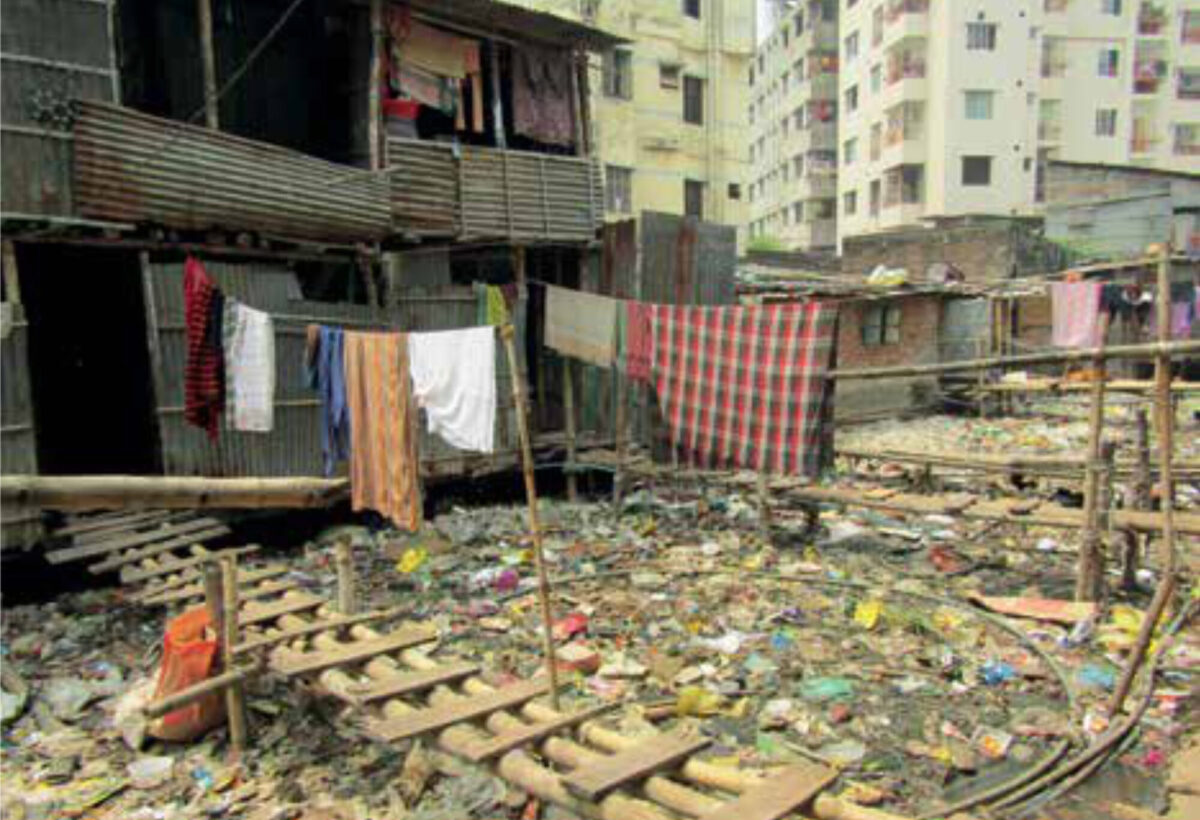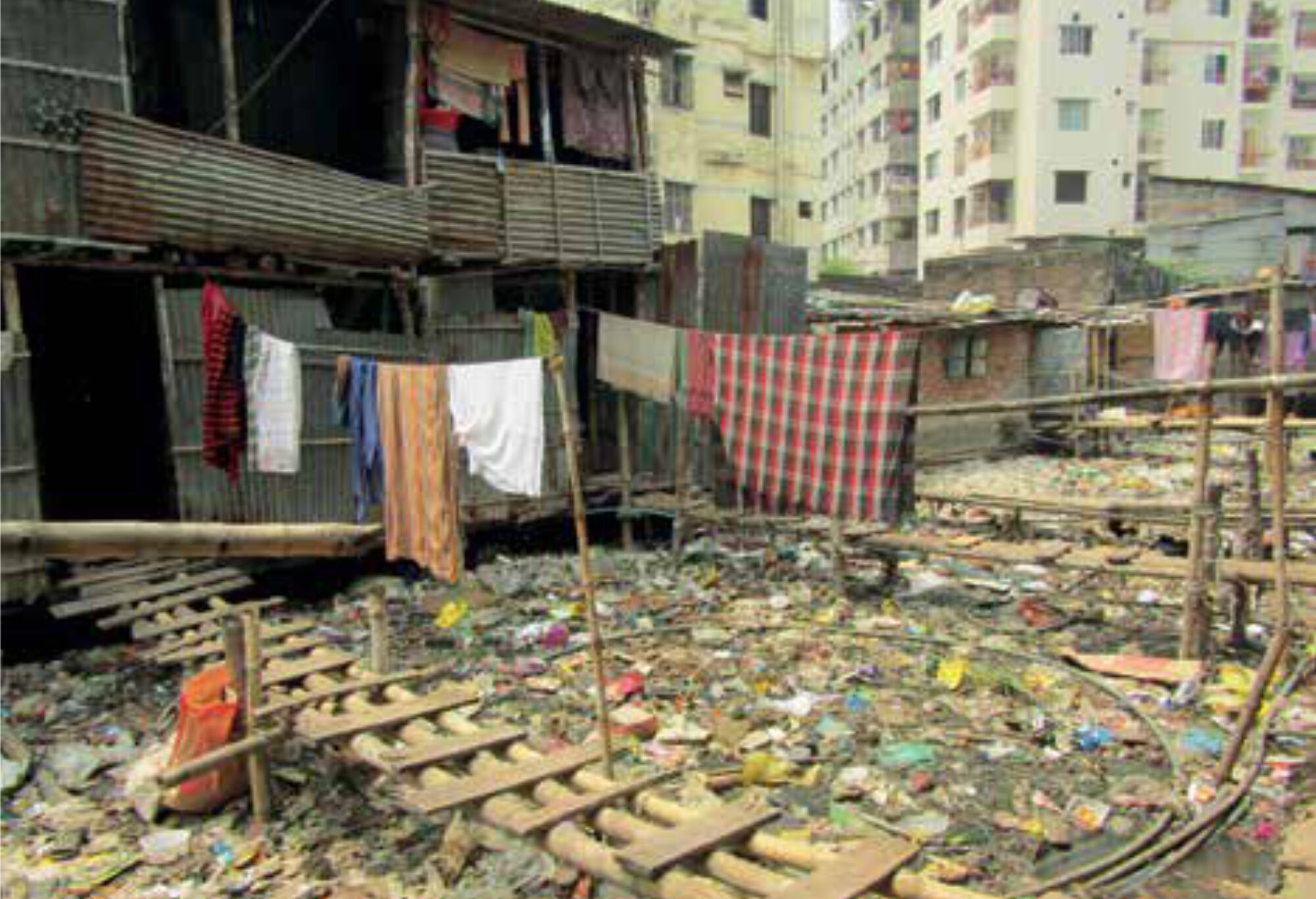Main content
Issues and concerns regarding water quality, public health and waste governance
Plastic, an offer of modernity, has become one of the largest and significantly important parts of our everyday life, but it is also posing a huge threat to our environment and to public health. Plastic does not only pollute the surface environment and freshwater and marine ecosystems, but toxic elements released from plastic also percolate through the surface and contaminate ground water, which we often use as ‘safe’ drinking water. This becomes problematic when we look into the entire governance infrastructure of plastic and the ground water interface, and how a state sponsored ‘safe drinking water’ campaign could instead lead to a ‘risk society’ in the global South. A recent study found that 83% of tap water samples taken around the world contained plastic pollutants, concluding that people may be ingesting between 3,000 and 4,000 microparticles of plastic per year from tap water.[1] This paper sheds light on the complex interface of plastic, water and public health, with examples from Bangladesh, and advocates for a new strategy of plastic governance in modern states.
Expansion of plastic in modern society
Since its rise in the 1950s, because of its durability, malleability, light weight and low cost, and due to a lack of environmental awareness and appropriate policy measures, global plastic production reached 322 million tonnes in 2015. Approximately 50% of plastics are used for single-use disposable applications, such as packaging, agricultural films and disposable consumer items, between 20 and 25% for long-term infrastructure such as pipes, cable coatings and structural materials, and the remaining 25 to 30% for durable consumer applications with an intermediate lifespan, such as in electronic goods, furniture, and vehicles. [2] An estimated 6.3 billion tonnes of plastic waste have been produced since the 1940s, and 79% of this is hidden in landfill sites or in the natural environment.
Plastic and beck’s ‘risk society’
As Beck (1992) argues, we are suffering from the unwanted and unseen consequences of modernity, where industrial institutions both produce and legitimise risks that they cannot control. [3] Modern society is structured around and impacted by new types of risks which have never existed before. Society lives in the future as it were and ends up exposed to the risks produced by modernity itself. This is more like a manufactured risk where a high level of human agency is involved in producing and mitigating such risks. In Beck’s ‘risk society’, risks are universal and irreversible. As everyone in the society is equally exposed to these manufactured risks and since the consequences will be suffered in the future, there is no way that we can reverse the mistakes already made. Though the idea of a ‘risk society’ is more appropriate and relevant to the technologically advanced world, if we take the plastics industry as an artefact of modernity, its future threats to public health and our environment as a whole fit very well into the discussion of ‘risk society’ across the globe.
The impact of plastic on the global environment is one of the major concerns in the present world. Plastics contains many toxic chemicals and hazardous substances, which could potentially cause eye irritation with impaired vision, respiratory problems, liver dysfunction, cancers, skin diseases, lung problems, headache, dizziness, early child puberty, disruption in reproductive gland development and sperm production and other reproductive health problems, and cardiovascular, genotoxic, and gastrointestinal issues. This is the result of the irresponsible commercialisation of plastic, which has led to single-use plastics applications, inadequate post-use treatment, low recyclability and reusability rates, and a high potential of disintegration into microplastics. These emerging risks are very much associated with the management of plastic wastes and, as mentioned earlier, a huge amount of plastic is ending up in landfills, which pose a further threat to drinking water and the environment in general. Panno et al (2019) studied shallow groundwater aquifers source of 25% of global drinking water – which are open systems and susceptible to contamination by surface-borne pollutants. They studied filter pads of the water samples and counted samples with specific morphologies (fibre, fragment, foam, bead, and film) and recorded colour. Chemical identity of the microplastics was obtained by pyrolysis gas chromatography mass spectrometry (Py-GCMS). This is a cutting edge analytical method to identify compounds with unique details. This research was conducted in a developed country where used plastics are managed and recycled. Therefore, all the microplastics found were fibres associated with chemical proxies of septic tanks (triclosan, phosphate, and chloride). For countries where the use of plastic is rising rapidly and plastic waste management is not strictly practiced, this study hints at a direct plastic-water nexus and rings the alarm bell for future contamination of subsurface water.

Bangladesh: plastic-water nexus
The plastic-water nexus is essential to understand the linkages between plastic contamination, water, and future uncertainties. A huge portion of plastic ends up in landfills, gradually decays, and releases toxic chemicals, which then seep into ground water and pose a significant threat to human health. The world is now more cautious about plastic wastes. In December 2017, about 200 nations at the UN Environment Assembly in Nairobi signed a resolution to eliminate plastic pollution in world oceans immediately. Just a month later, the European Commission released a plastic strategy calling for all plastic packaging in the EU market to be recyclable or reusable by 2030 and for the reduced consumption of single-use plastic. In March 2019, 170 countries echoed the EU’s pledge to ‘significantly reduce’ the use of throw-away plastics by 2030. Many countries in the world, particularly the rich countries, have invested resources in plastic waste management, i.e. recycling, but this is not the case in a country like Bangladesh. Despite being the first country in the world to ban the use of the poly shopping bag in 2001, Bangladesh is currently the largest user of plastic in the world. Bangladesh plastics industries produce basic products for readymade garments, construction material, packaging and household goods. From these activities, Bangladesh is generating 336,000 tons per year of plastic waste, and around 17,000 tons per year is going to the landfill. Non-degradable plastic accounts for 73% of litter in any aquatic habitat, with roughly 50% disposed of after single use. With increasing urbanisation this will become even worse. The picture given below is one of the examples of how plastics are everywhere in a city slum area. Plastics are either carelessly thrown away, anywhere, or they are taken to the city corporation dumping stations via domestic and commercial bins, eventually ending up in landfill sites. Without legislation and policy guidelines on sustainable plastic use the country seems not to have the right political drive to implement the 2019 Nairobi plastic pollution declaration.
As the landfill sites in Bangladesh accumulate plastic waste, the risk of groundwater contamination becomes imminent. Ironically, Bangladesh’s dependence on groundwater is actually increasing. Before shallow tube wells were introduced in the early 1970s, people used water from ponds, rivers, wells and homestead water tanks for drinking and other domestic purposes. This exposed them to waterborne diseases. There were several solutions to this problem, such as boiling and filtering surface water, harvesting rainwater, using water purification tablets and drinking tube well water. Shallow tube wells were patronised by international donors like UNICEF and popularised through local politicians, who capitalised on this opportunity as a means of winning votes by distributing them to their constituencies. Having a tube well in the home yard was also symbolic of family identity and prestige. This shows how human choices, values, interests and relationships are embedded in knowledge production. Thus, despite being relatively the most expensive solution, shallow tube wells became a dominant feature in rural parts of Bangladesh. In the cities, deep tube wells became the major source of piped water for domestic use. The Dhaka Water Supply and Sewerage Authority (D-WASA), established in 1963 as an independent organisation, is currently serving 12.5 million people with 2110 million litres of water per day, mainly relying on underground water.
Conclusion
There are many studies on the monstrous consequences of the use of plastics, particularly for the surface environment and the aquatic ecosystem. However, the plastic – drinking water nexus has not drawn much attention yet. In addition, there is a huge grey area in relation to understanding responsibility and accountability, and more generally the governance of plastic waste management. There are several scattered initiatives without any concrete guidance at the national level; a more precise understanding and awareness at all levels is extremely important.
By portraying a picture of the plastic-water nexus, this paper aims to encourage a discussion of waste management in a broad context. It applies Beck’s ‘risk society’ concept, which has so far been used only in the North, to make it relevant to the global South. Hopefully, this paper will contribute to the formulation of a new vision of collective activities towards a responsible use of plastics.
References
- Kosuth M, Wattenberg EV, Mason SA, et al. Synthetic polymer contamination in global drinking water. Orb. Media 2017. https://orb-media.org/stories/Invisibles_plastics/
- Hopewell J, Dvorak R, Kosior E. Plastics recycling: challenges and opportunities. Philosophical Transactions of the Royal Society B: Biological Sciences. 2009; 364(1526). https://doi.org/10.1098/rstb.2008.0311
- Panno SV, Kelly WR, Scott J, et al. Microplastic contamination in karst groundwater systems. Groundwater. 2019; 57 (2); 189-96.


















































